+49 89 21 70 368 10
Sightseeing highlights
On this map, you’ll find our tips on things you definitely shouldn’t miss in Munich. Just click on the plus icons!
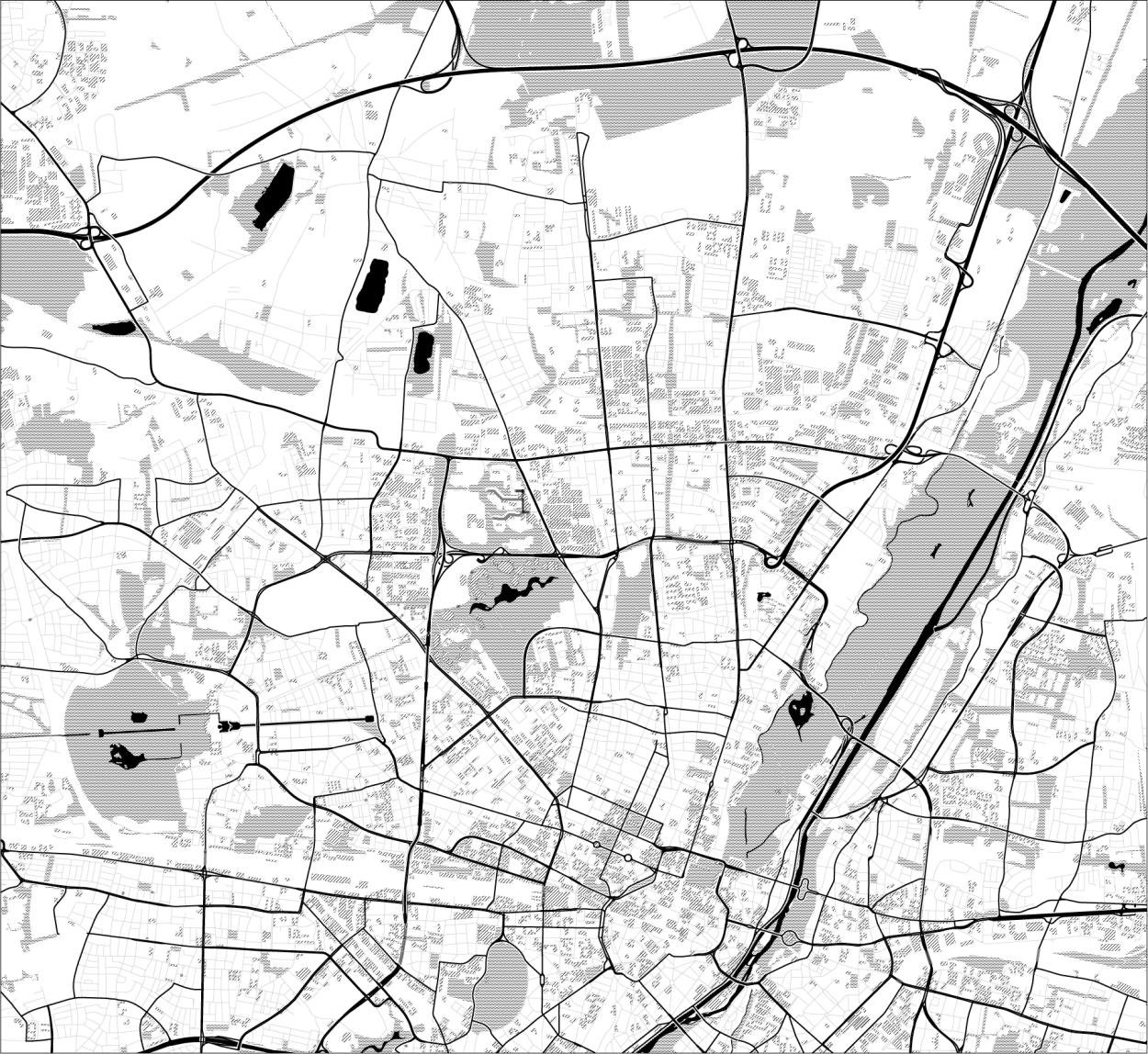
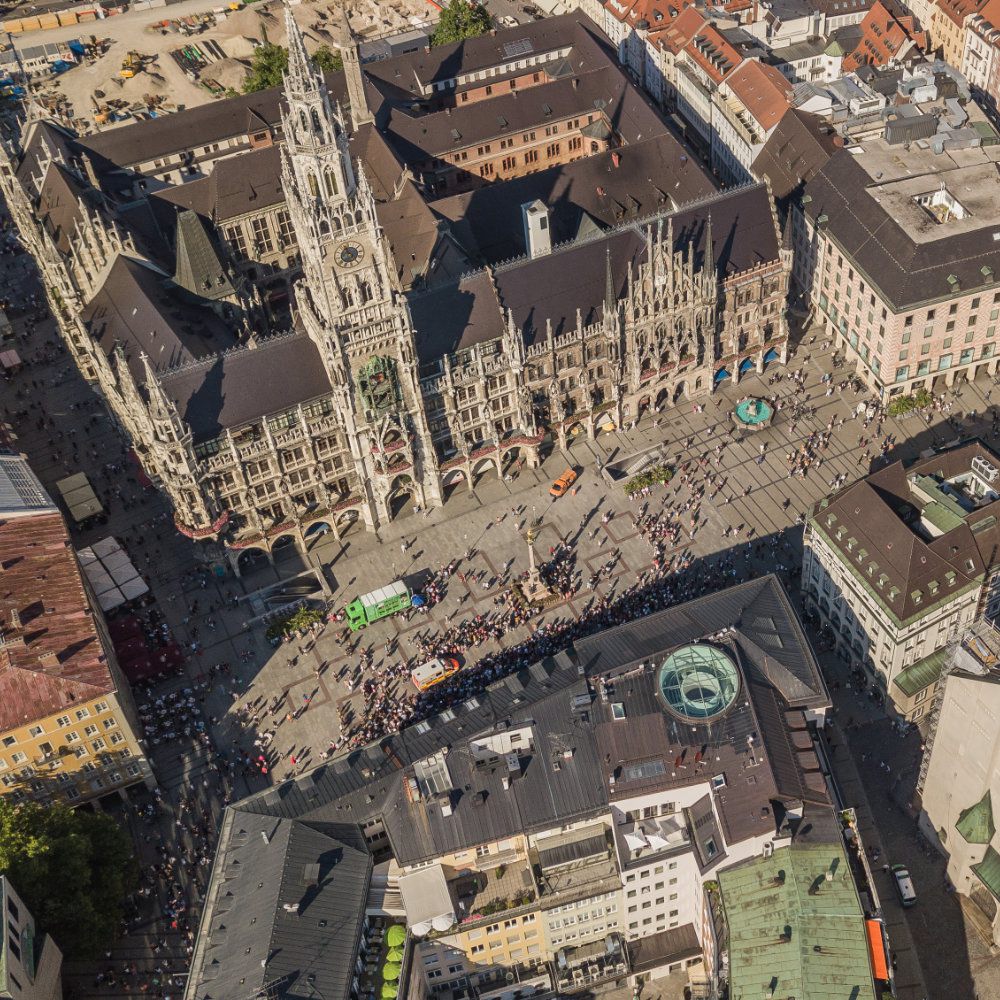
Marienplatz/downtown
The Marienplatz square represents the heart of downtown Munich, which makes it a popular attraction for tourists and locals alike. It features the “old” and “new” city halls – the latter with its famous mechanical clock, the Rathaus-Glockenspiel – along with all kinds of shops, restaurants, and cafes. Marienplatz is also in the middle of a pedestrian zone that extends in all directions, inviting you to stroll at your leisure and pop into whatever shop catches your fancy. With its venerable buildings and narrow streets, Munich's charming historic centre is a perfect reflection of Bavaria's rich culture.
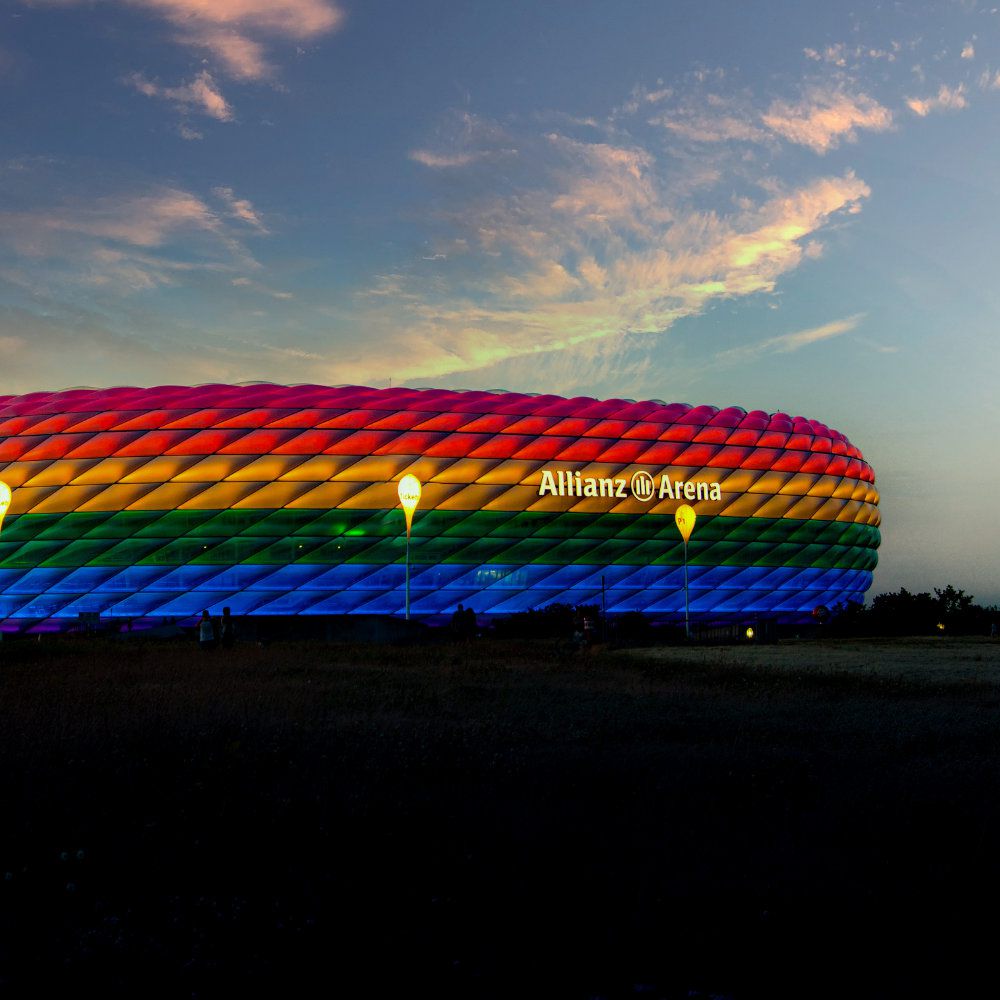
Allianz Arena
The Allianz Arena is one of the most well-known symbols of the city and the home of two highly successful football clubs, FC Bayern Munich and TSV 1860 München. Having opened in 2005, the arena can now house more than 75,000 fans. Its unmistakable exterior, which can be illuminated in various colours depending on the occasion, makes the Allianz one of the most recognisable structures in the world. It also offers a variety of tours that give visitors a glimpse of what goes on behind the scenes during matches and other events.
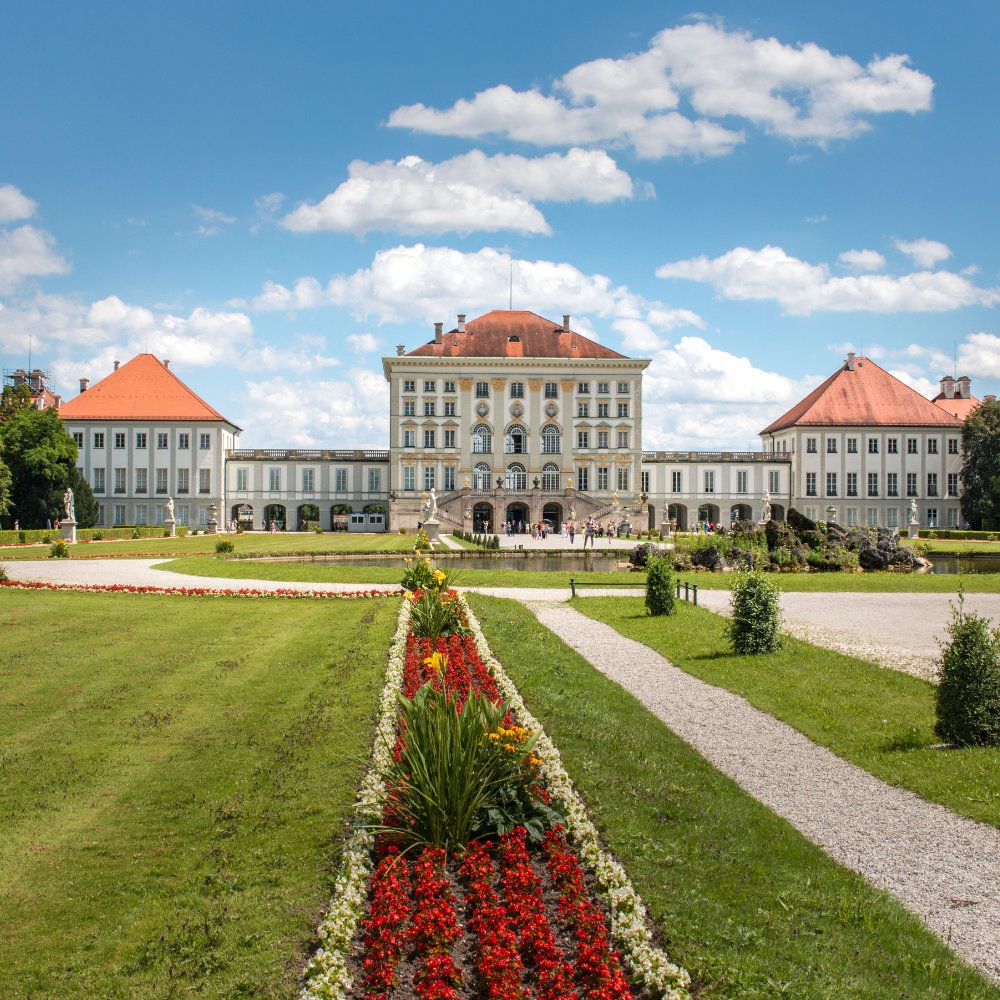
Nymphenburg Palace
Located on the west side of the city, this Baroque palace is a popular destination for tourists. It was built in the 17th century to serve as the summer residence of Bavaria's kings, but is now home to several museums – the Marstallmuseum with its royal carriages and sleighs, for example, and the Porzellanmuseum, which boasts an impressive collection of porcelain works from all over the world. The Baroque gardens and pond at Nymphenburg Palace are also a gorgeous place to simply relax and go for a stroll.
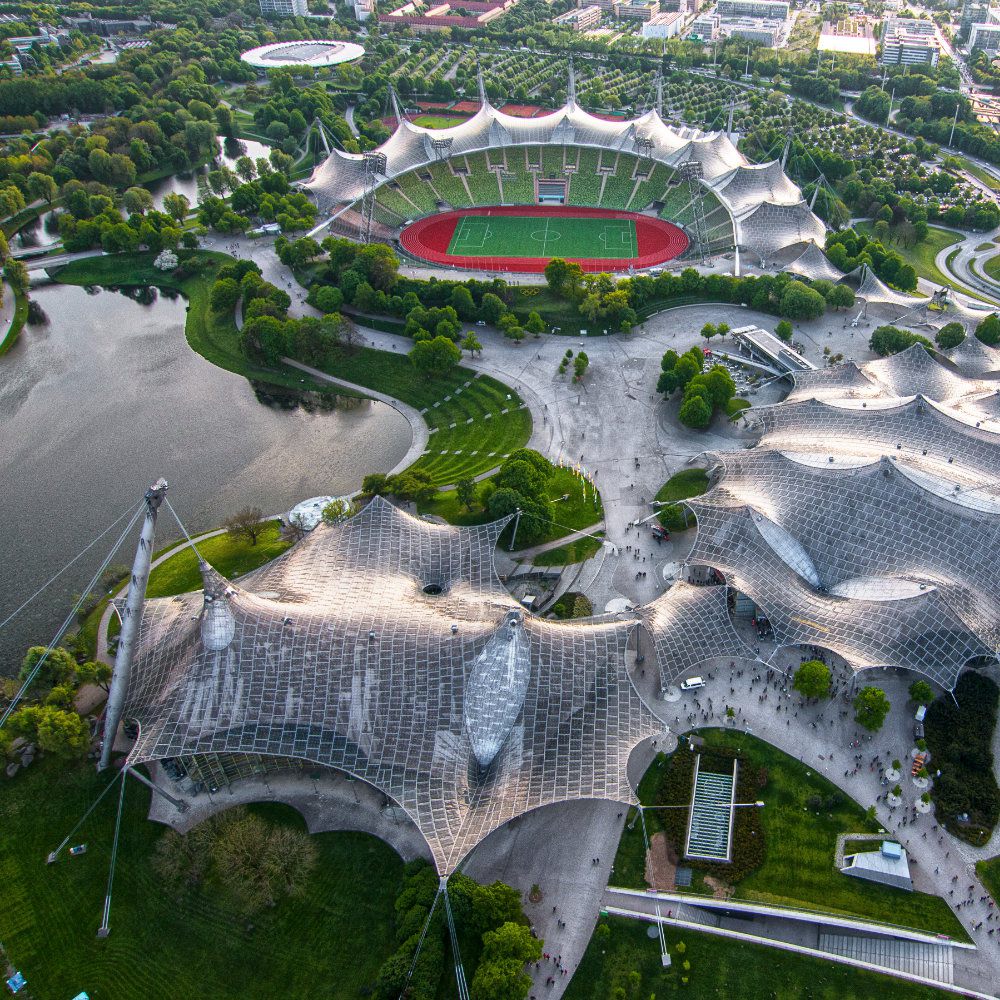
Olympiapark and BMW
Olympiapark offers a unique combination of nature and architecture on the north side of Munich thanks to its many green spaces and striking constructions. Built for the 1972 Summer Games, it continues to present an array of possibilities for sport, leisure, and various types of events. Olympiapark comprises the Olympic Stadium, the Olympic Hall, and the Olympic Tower, the last of which includes a 190-metre observation deck that (weather permitting) offers a breath-taking view of the city and the Alps to the south. Directly adjacent to Olympiapark, you can also visit BMW Welt, a futuristic showroom for the newest models dreamed up by Munich's most famous automotive brand. Right next door is the BMW Museum, where you can learn more about the company's history and feast your eyes on classic cars from days gone by.
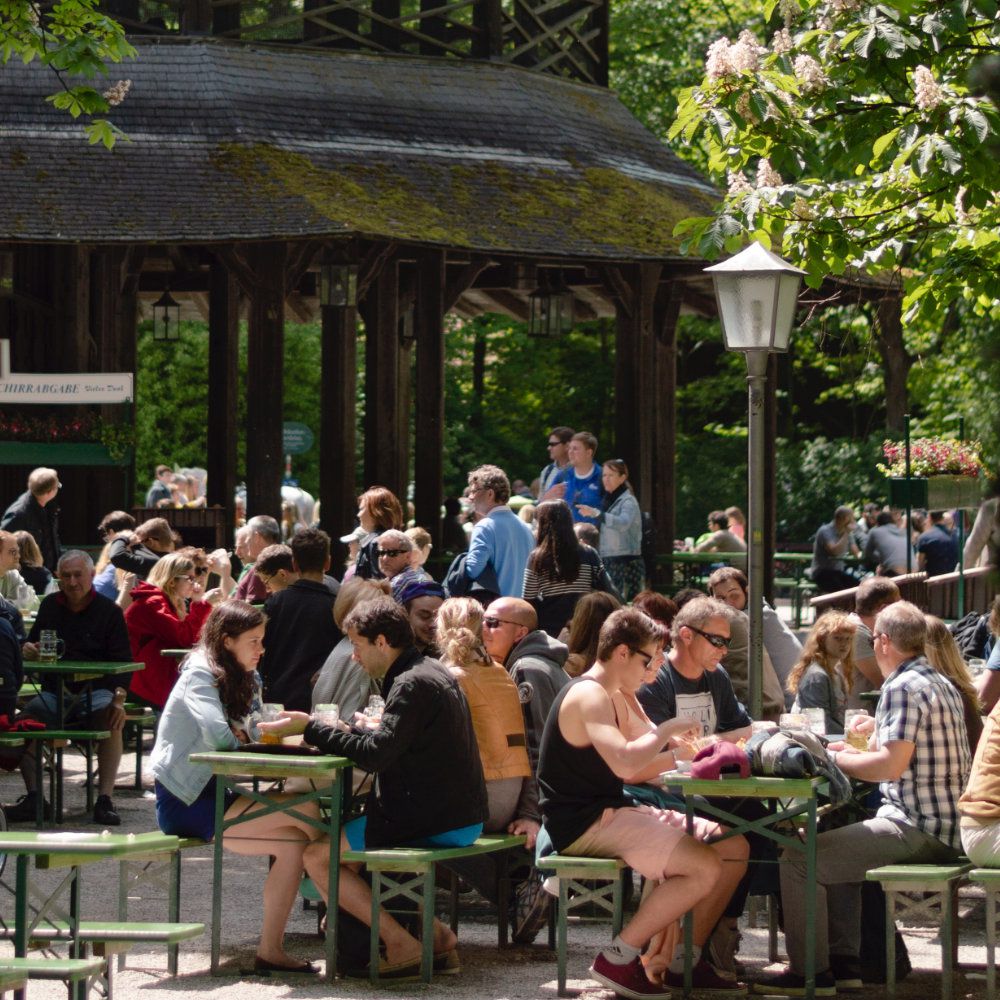
Take a break at a beer garden
When seeing the sights in Munich, you should always schedule a stop at a beer garden so you can recharge with the right refreshment. Beer garden culture is an important part of Munich's traditions, and no wonder: Enjoying a few local specialities with a table full of friends under a Bavarian blue sky is one of the things that make life worth living. On our “Best Beer Gardens” page, we've put together a brief overview of the Munich locations you won’t want to miss.
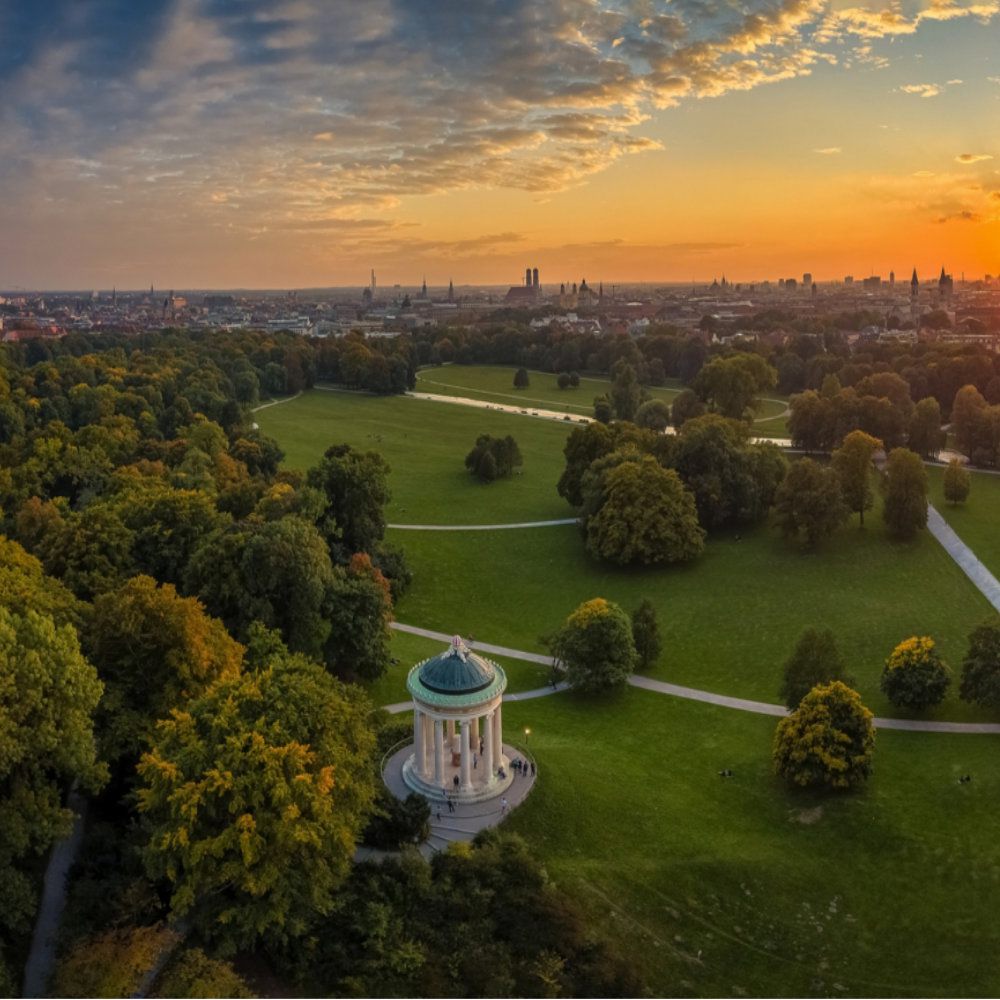
Eisbach and English Garden
If you cross the Hofgarten, walk by the Bayerische Staatskanzlei, and continue past the Haus der Kunst, you can watch as daredevil surfers brave the unruly waters of the Eisbach – an artificial river that flows all the way through the English Garden. The English Garden itself, meanwhile, is one of the largest urban parks in the world. It thus presents nearly endless ways to have fun or just relax, be it with a picnic, a leisurely stroll, or a spin on your bicycle. Whatever you choose, you’ll have every opportunity to enjoy the outdoors and leave the hustle-and-bustle of the city behind for a few hours. If you head east and just a bit south from La Mansion Vi Vadi, you’ll find your way to the Kleinhesseloher See – a lovely spot for watching the water fowl or taking refreshment at the Seehaus.
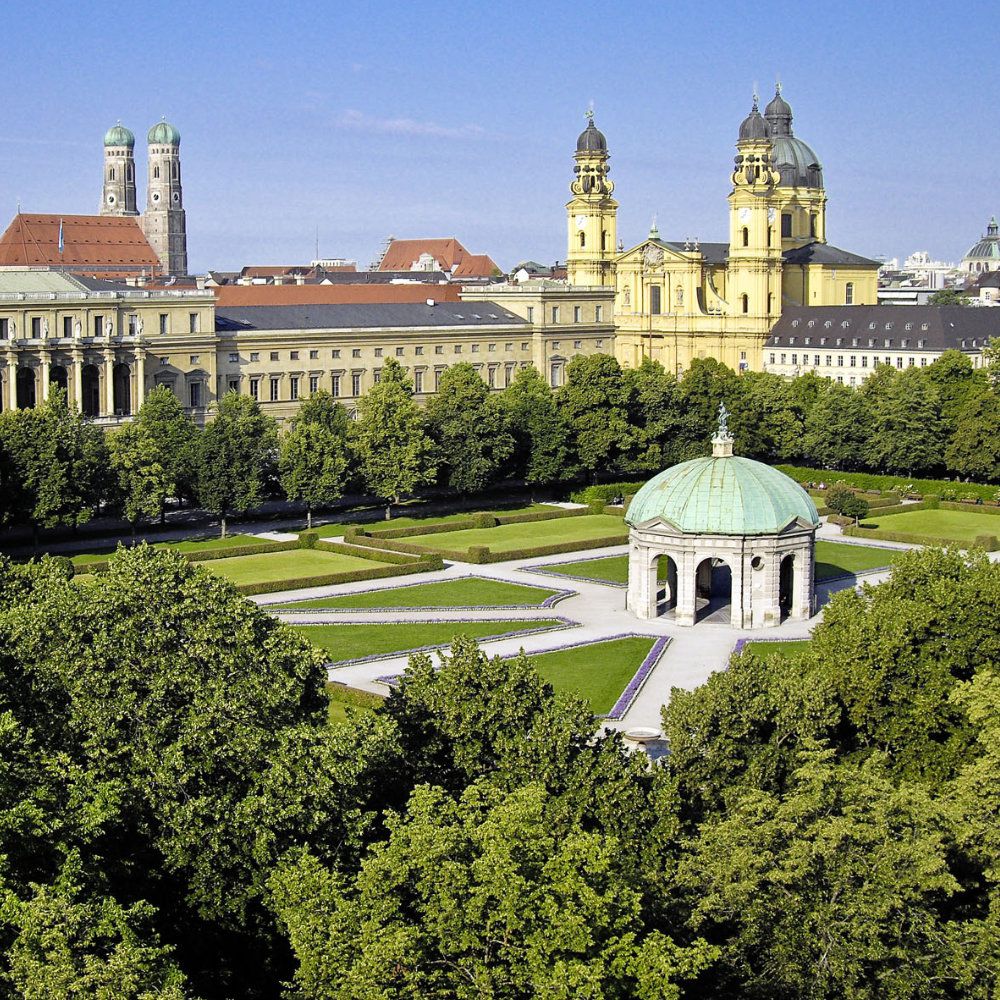
Munich Residence and Hofgarten
Walking along the grandeur of Brienner Straße, you’ll eventually come to the Munich Residence, which once served as the home of Bavaria's dukes, electors, and kings. Today, it’s an imposing museum full of opulent halls and artistic treasures to marvel at. Just outside, you’ll also find the Hofgarten, a splendid 17th-century garden complex that offers a peaceful refuge from the rest of downtown Munich – not to mention a magnificent view of the Residence. It’s a popular meeting place for those looking to take a walk, go for a jog, or simply enjoy the sunshine.
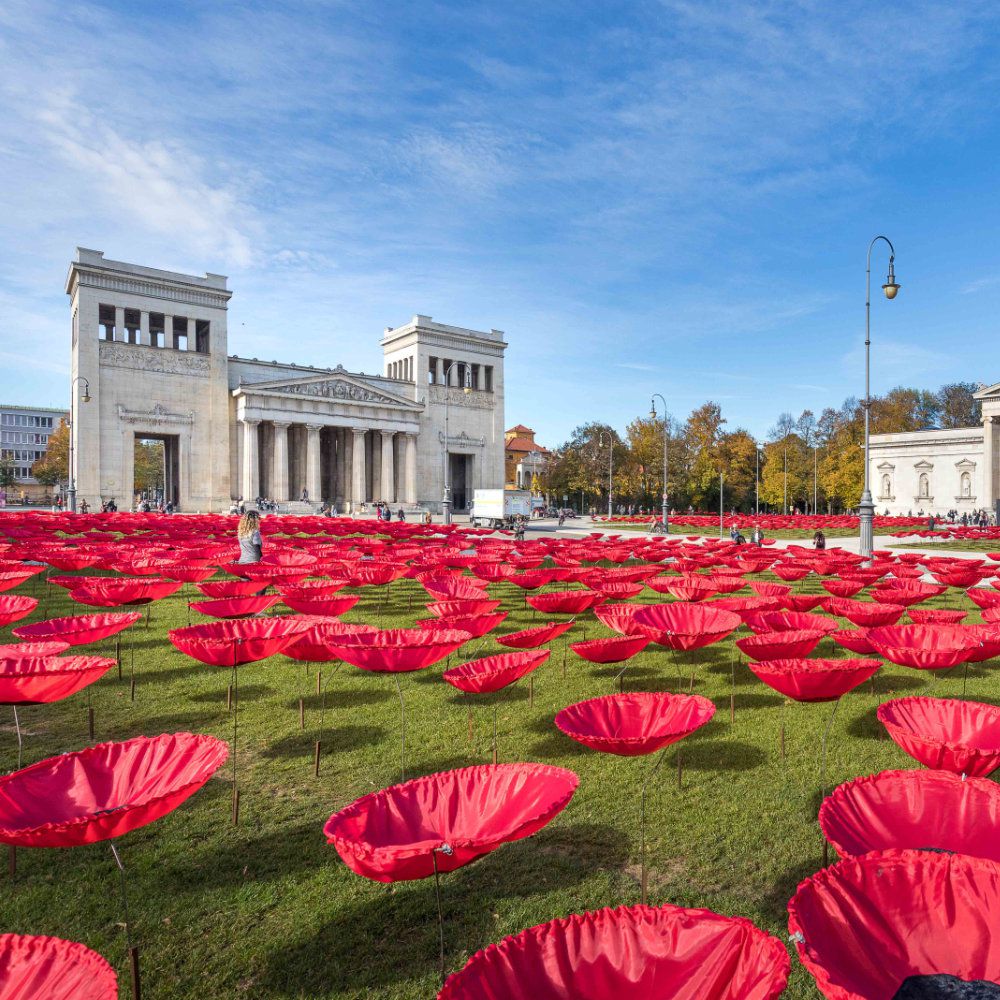
Königsplatz and nearby museums
Königsplatz is just a short walk away from the Downtown Vi Vadi Hotel. Known for imposing architecture that recalls the classic Greek style, this square is also surrounded by a number of renowned museums that house collections ranging from the ancient to the modern world. It's not hard at all to spend an entire day here, gazing upon works from the Blue Rider movement or famous artists like van Gogh, Monet, Dürer, and Rubens. That said, paying the area a visit is still worth it if you only have an hour or two; simply strolling through the neighbourhood (which is otherwise frequented by students) is also a fine idea, particularly for architecture enthusiasts.
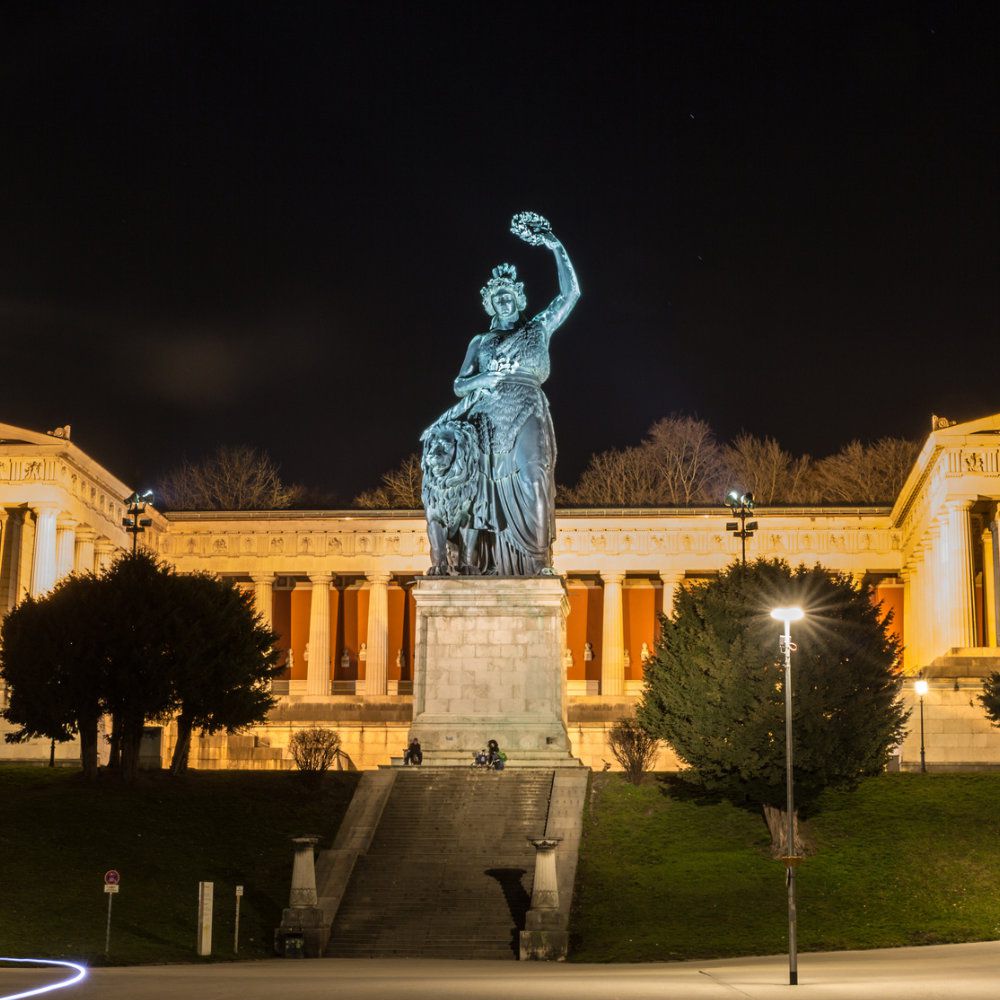
Bavaria statue and Theresienwiese
The majestic goddess Bavaria presides over the southern end of Theresienwiese, the official ground of the world-famous Oktoberfest. This statue was created in the 19th century as a symbol of the Free State of Bavaria and a worldly depiction of its divine patron. What many don't know, however, is that you can actually view the inside of the 18-metre-tall figure. A spiral staircase will take you up to Bavaria's head, where you can enjoy an excellent view of the surrounding area. Theresienwiese, meanwhile, is a popular place to meet even when Oktoberfest isn’t going on. Visitors come here in droves for other events, as well, such as the (admittedly smaller) Frühlingsfest in the spring, the Tollwood Winter Festival, the huge flea markets organised by the Red Cross, open-air concerts, and public gatherings to watch football matches and the like.
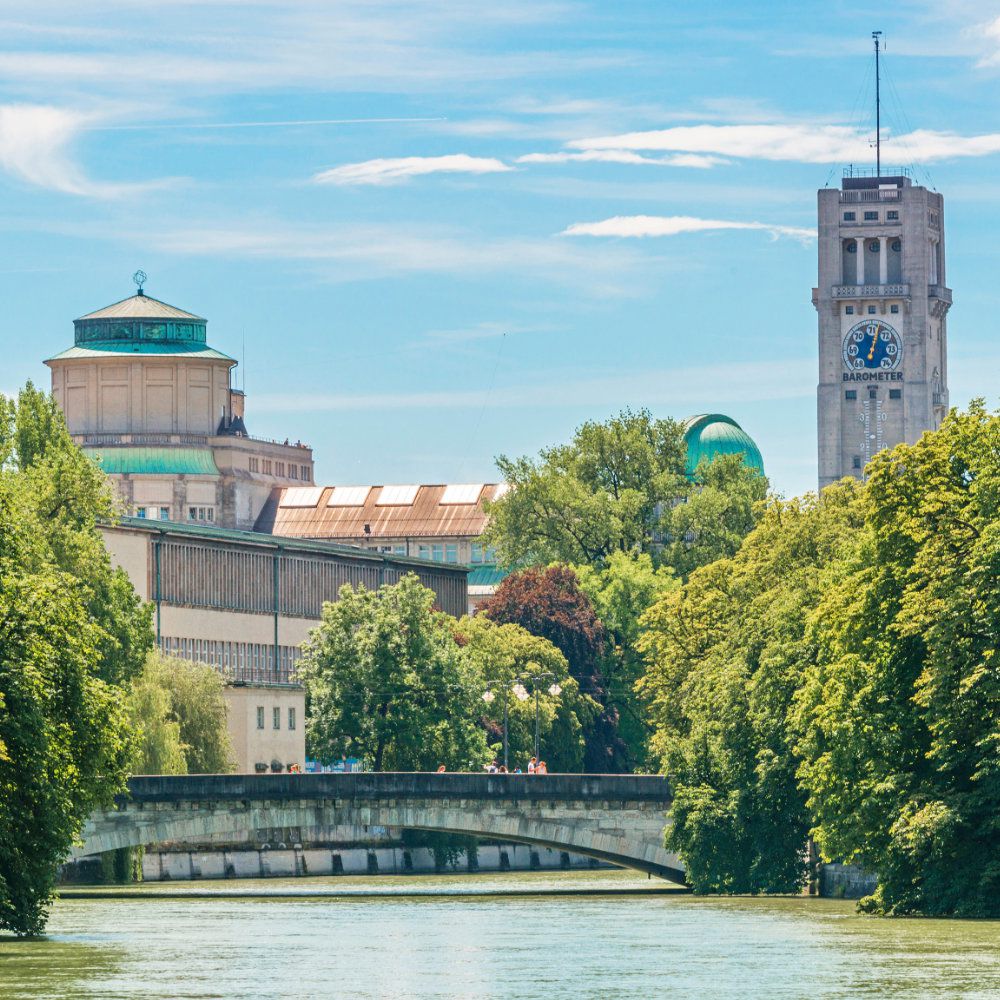
Deutsches Museum
The Deutsches Museum is one of the biggest science museums anywhere in the world. With more than 80,000 objects on display, it offers extensive insights into many areas of human advancement. Visitors can also experience interactive exhibits, marvel at historical artefacts, and immerse themselves in the fascinating world of science and technology. From aviation and astronomy to medicine and mathematics, there's plenty here for inquisitive minds of all ages to discover.
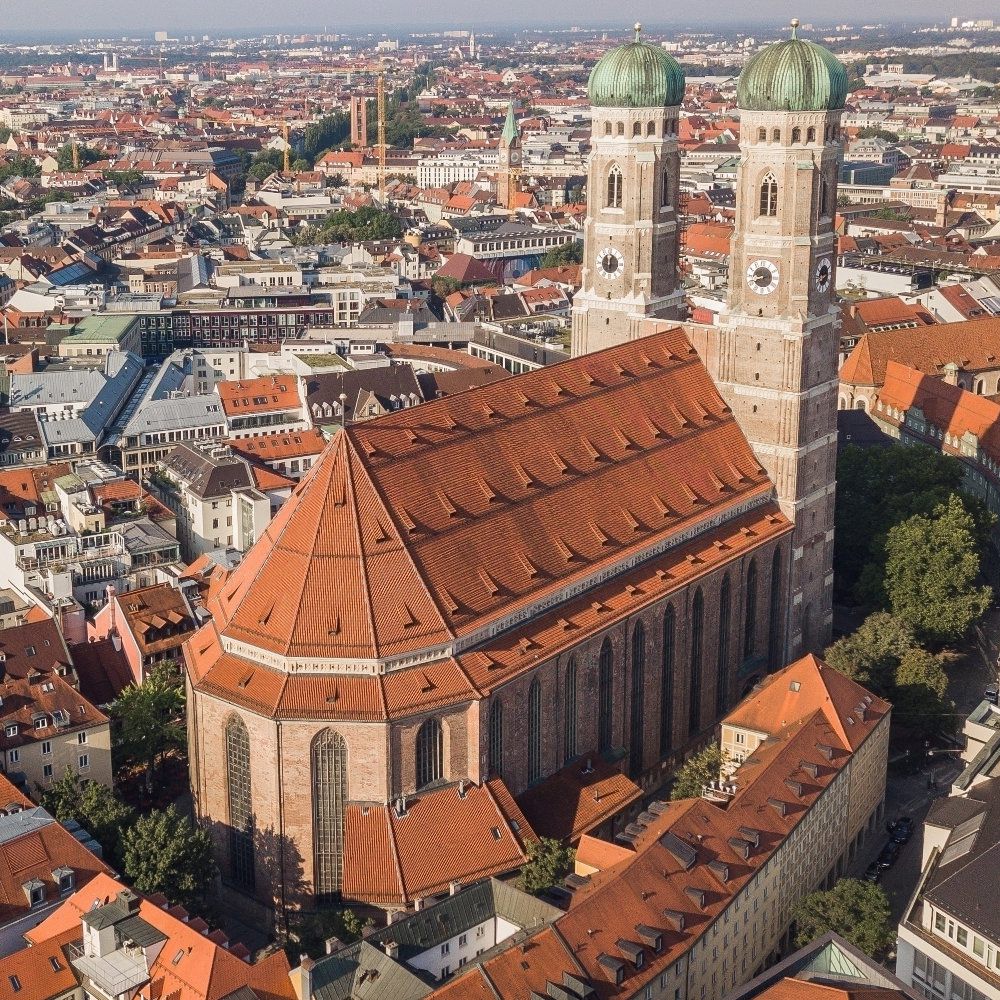
Frauenkirche
One of the most recognisable symbols of Munich, the official name of this striking cathedral from the late Gothic period is “Dom zu Unserer Lieben Frau” (“Cathedral of Our Dear Lady”). Its twin spires are an integral part of the city's skyline, and its interior features stellar vaults and rows of columns of impressive height. The floor of the Frauenkirche's entrance area, meanwhile, is marked by the infamous Teufelstritt – the “Devil's Footprint”, which is the subject of an old legend. Visitors can learn more about the rich history and architecture of this prominent religious site and take in a magnificent panorama of the surrounding area from the southern spire's observation deck.
Here, you’ll find our tips on things you definitely shouldn’t miss in Munich. Just keep scrolling until you see where you want to start!
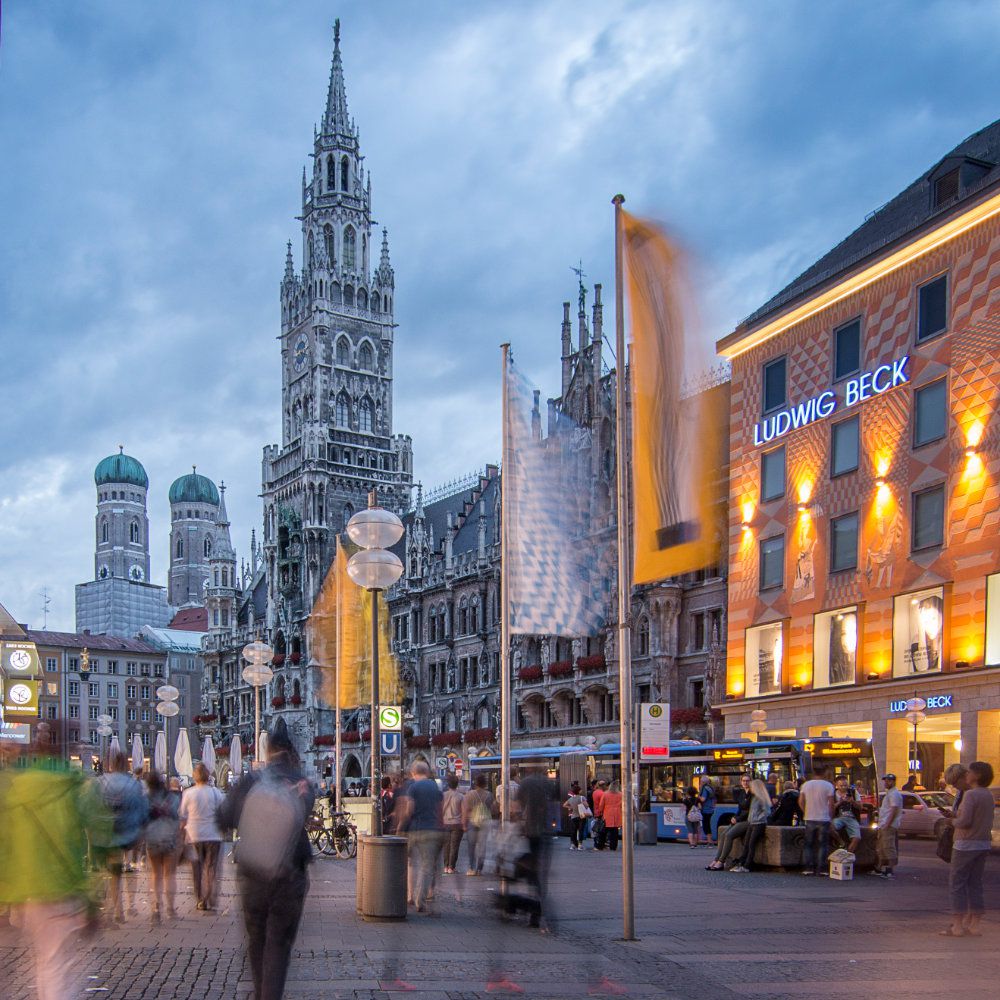
Marienplatz/downtown
The Marienplatz square represents the heart of downtown Munich, which makes it a popular attraction for tourists and locals alike. It features the “old” and “new” city halls – the latter with its famous mechanical clock, the Rathaus-Glockenspiel – along with all kinds of shops, restaurants, and cafes. Marienplatz is also in the middle of a pedestrian zone that extends in all directions, inviting you to stroll at your leisure and pop into whatever shop catches your fancy. With its venerable buildings and narrow streets, Munich's charming historic centre is a perfect reflection of Bavaria's rich culture.

Königsplatz and nearby museums
Königsplatz is just a short walk away from the Downtown Vi Vadi Hotel. Known for imposing architecture that recalls the classic Greek style, this square is also surrounded by a number of renowned museums that house collections ranging from the ancient to the modern world. It's not hard at all to spend an entire day here, gazing upon works from the Blue Rider movement or famous artists like van Gogh, Monet, Dürer, and Rubens. That said, paying the area a visit is still worth it if you only have an hour or two; simply strolling through the neighbourhood (which is otherwise frequented by students) is also a fine idea, particularly for architecture enthusiasts.

Munich Residence and Hofgarten
Walking along the grandeur of Brienner Straße, you’ll eventually come to the Munich Residence, which once served as the home of Bavaria's dukes, electors, and kings. Today, it’s an imposing museum full of opulent halls and artistic treasures to marvel at. Just outside, you’ll also find the Hofgarten, a splendid 17th-century garden complex that offers a peaceful refuge from the rest of downtown Munich – not to mention a magnificent view of the Residence. It’s a popular meeting place for those looking to take a walk, go for a jog, or simply enjoy the sunshine.

Eisbach and English Garden
If you cross the Hofgarten, walk by the Bayerische Staatskanzlei, and continue past the Haus der Kunst, you can watch as daredevil surfers brave the unruly waters of the Eisbach – an artificial river that flows all the way through the English Garden. The English Garden itself, meanwhile, is one of the largest urban parks in the world. It thus presents nearly endless ways to have fun or just relax, be it with a picnic, a leisurely stroll, or a spin on your bicycle. Whatever you choose, you’ll have every opportunity to enjoy the outdoors and leave the hustle-and-bustle of the city behind for a few hours. If you head east and just a bit south from La Mansion Vi Vadi, you’ll find your way to the Kleinhesseloher See – a lovely spot for watching the water fowl or taking refreshment at the Seehaus.

Take a break at a beer garden
When seeing the sights in Munich, you should always schedule a stop at a beer garden so you can recharge with the right refreshment. Beer garden culture is an important part of Munich's traditions, and no wonder: Enjoying a few local specialities with a table full of friends under a Bavarian blue sky is one of the things that make life worth living. On our “Best Beer Gardens” page, we've put together a brief overview of the Munich locations you won’t want to miss.

Olympiapark and BMW
Olympiapark offers a unique combination of nature and architecture on the north side of Munich thanks to its many green spaces and striking constructions. Built for the 1972 Summer Games, it continues to present an array of possibilities for sport, leisure, and various types of events. Olympiapark comprises the Olympic Stadium, the Olympic Hall, and the Olympic Tower, the last of which includes a 190-metre observation deck that (weather permitting) offers a breath-taking view of the city and the Alps to the south. Directly adjacent to Olympiapark, you can also visit BMW Welt, a futuristic showroom for the newest models dreamed up by Munich's most famous automotive brand. Right next door is the BMW Museum, where you can learn more about the company's history and feast your eyes on classic cars from days gone by.

Nymphenburg Palace
Located on the west side of the city, this Baroque palace is a popular destination for tourists. It was built in the 17th century to serve as the summer residence of Bavaria's kings, but is now home to several museums – the Marstallmuseum with its royal carriages and sleighs, for example, and the Porzellanmuseum, which boasts an impressive collection of porcelain works from all over the world. The Baroque gardens and pond at Nymphenburg Palace are also a gorgeous place to simply relax and go for a stroll.

Allianz Arena
The Allianz Arena is one of the most well-known symbols of the city and the home of two highly successful football clubs, FC Bayern Munich and TSV 1860 München. Having opened in 2005, the arena can now house more than 75,000 fans. Its unmistakable exterior, which can be illuminated in various colours depending on the occasion, makes the Allianz one of the most recognisable structures in the world. It also offers a variety of tours that give visitors a glimpse of what goes on behind the scenes during matches and other events.

Bavaria statue and Theresienwiese
The majestic goddess Bavaria presides over the southern end of Theresienwiese, the official ground of the world-famous Oktoberfest. This statue was created in the 19th century as a symbol of the Free State of Bavaria and a worldly depiction of its divine patron. What many don't know, however, is that you can actually view the inside of the 18-metre-tall figure. A spiral staircase will take you up to Bavaria's head, where you can enjoy an excellent view of the surrounding area. Theresienwiese, meanwhile, is a popular place to meet even when Oktoberfest isn’t going on. Visitors come here in droves for other events, as well, such as the (admittedly smaller) Frühlingsfest in the spring, the Tollwood Winter Festival, the huge flea markets organised by the Red Cross, open-air concerts, and public gatherings to watch football matches and the like.

Deutsches Museum
The Deutsches Museum is one of the biggest science museums anywhere in the world. With more than 80,000 objects on display, it offers extensive insights into many areas of human advancement. Visitors can also experience interactive exhibits, marvel at historical artefacts, and immerse themselves in the fascinating world of science and technology. From aviation and astronomy to medicine and mathematics, there's plenty here for inquisitive minds of all ages to discover.

Frauenkirche
One of the most recognisable symbols of Munich, the official name of this striking cathedral from the late Gothic period is “Dom zu Unserer Lieben Frau” (“Cathedral of Our Dear Lady”). Its twin spires are an integral part of the city's skyline, and its interior features stellar vaults and rows of columns of impressive height. The floor of the Frauenkirche's entrance area, meanwhile, is marked by the infamous Teufelstritt – the “Devil's Footprint”, which is the subject of an old legend. Visitors can learn more about the rich history and architecture of this prominent religious site and take in a magnificent panorama of the surrounding area from the southern spire's observation deck.
